Article Chapters
Spray equipment is the backbone of modern paint application and has revolutionized the way we apply paints and coatings. From airless sprayers to HVLP systems, understanding the different types of spray equipment is critical whether you’re a seasoned professional or new to the industry, achieving the finish and efficiency your project requires. In this article, we will take an in-depth look at paint spray equipment and the important basic accessories and parts in a spray system, exploring the various types available and their applications.
What Types of Spray Systems are Available for Applying Coatings?
Choosing the right spray system is like selecting a superhero for your painting project: each has its unique powers suited for battling the forces of inefficiency and uneven coats. From traditional air atomization spray systems and rugged airless sprayers to high-precision HVLP systems and electrostatic spray systems, understanding the types of spray systems available today can significantly enhance your paint application experience. Here’s a fun and professional rundown of the different types of spray systems that can help you achieve a flawless finish with a dash of humor and personality.
Air atomization spray system.
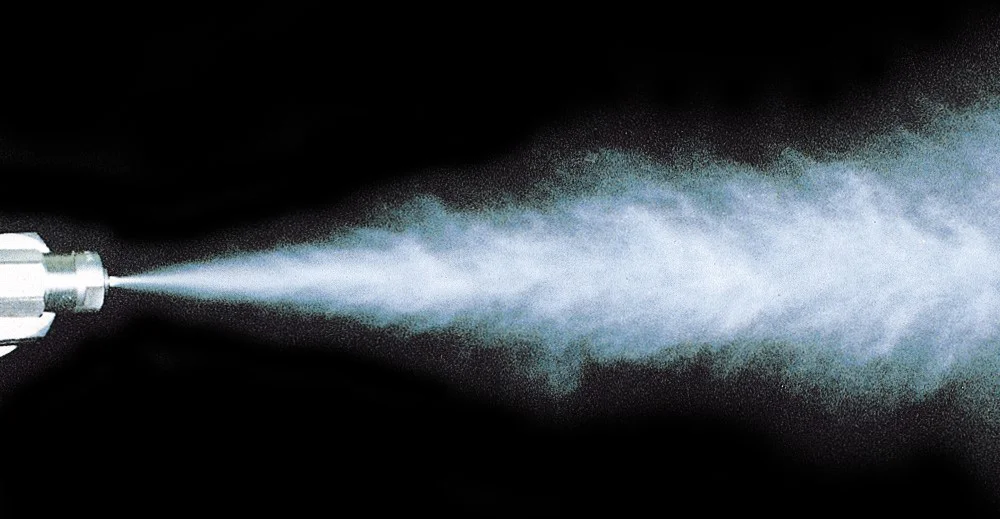
The air atomization spray system is a type of spray system used for applying coatings, which utilizes compressed air to atomize the coating material into fine droplets for uniform application onto surfaces. This system consists of a spray gun, a fluid nozzle, an air cap, and an air compressor.
The working principle of the air atomization spray system is based on the Bernoulli’s principle, where high-velocity airflow is directed past the fluid nozzle, creating a low-pressure area that draws the coating material from the fluid reservoir. The high-velocity airflow also breaks the coating material into fine droplets, which are then propelled towards the substrate for coating.
There are three main types of air atomization spray systems based on their atomization process:
- Traditional Air Atomization:This method uses high-pressure air to atomize the coating material, resulting in fine droplets. It is suitable for a wide range of coating materials and provides good coverage.
- High Volume Low Pressure (HVLP):HVLP spray guns use a large volume of air at low pressure to atomize the coating material. This method reduces overspray and is suitable for achieving high-quality finishes with less material wastage.
- Low Volume Low Pressure (LVLP): LVLP spray guns use a lower volume of air at low pressure to atomize the coating material. This method also reduces overspray and is suitable for detailed work and smaller areas.
The air atomization spray system is commonly used in various industries for applications such as automotive painting, furniture finishing, and metal coating. Its advantages include high transfer efficiency, which means less coating material is wasted, and the ability to achieve a smooth, uniform finish. However, it also has limitations, such as the potential for overspray and the need for proper ventilation due to the use of compressed air.
Overall, the air atomization spray system is a versatile and effective tool for applying coatings, offering high efficiency and quality finishes when used correctly.
Electrostatic Spraying System.
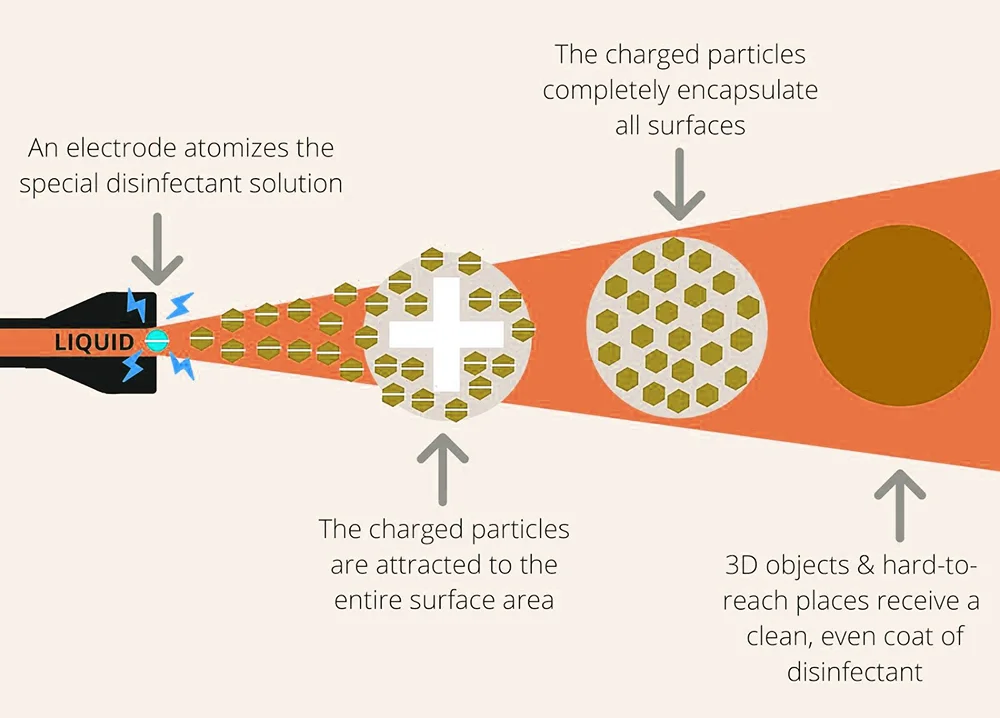
Electrostatic spraying is a coating application method that uses an electrostatic charge to attract paint particles to the substrate, creating a uniform and efficient coating. This process is commonly used in industries such as automotive, aerospace, and electronics due to its high transfer efficiency and ability to coat complex shapes.
Introduction and Working Principle:
Electrostatic spraying is a coating method that uses a spray gun to positively charge electric particles while the workpiece is grounded, or negatively charged. The positively charged paint particles are attracted to the negatively charged substrate, creating a strong bond. This electrostatic attraction helps to evenly coat the substrate, even in hard-to-reach areas.
Key Components:
- Spray Gun: The spray gun generates the electrostatic charge and controls the flow of paint.
- Power Supply: Provides the high voltage needed to create the electrostatic charge.
- Grounding System: Ensures the substrate is properly grounded to attract the charged paint particles.
Types of Electrostatic Spraying Methods:
- Air Spray Electrostatic Spraying: This method combines conventional air spraying with electrostatic charging. It is suitable for medium to large parts and provides good coverage and transfer efficiency.
- Air-Assisted Airless Electrostatic Spraying: This method uses a high-pressure pump to atomize the paint, combined with an air-assisted nozzle for better atomization. It is suitable for high-viscosity coatings and provides a fine finish.
- Rotary Bell Atomizer Electrostatic Spraying: This method uses a spinning bell to atomize the paint, creating a fine mist. It is suitable for high-speed production lines and provides excellent coverage and transfer efficiency.
Application Areas:
Electrostatic spraying is used in various industries for coating metal, plastic, wood, and other materials. It is commonly used for painting automotive parts, appliances, furniture, and electronic components. It is also the most common process method for applying powder coatings.
Advantages and limitations:
Advantage:
- Improved transfer efficiency: Electrostatic attraction ensures more coating material reaches the target surface, resulting in less waste.
- Uniform Coating Thickness: Electrostatic charge helps achieve a more consistent coating thickness and a consistent finish without brush marks or streaks. This is true even on complex shapes.
- Reduce Overspray: The controlled spray process reduces overspray, minimizing material waste and environmental impact.
Limit:
- Expensive Cost: Electrostatic spray systems are more expensive to purchase and maintain than traditional spray systems.
- Complexity: The technology requires careful calibration and maintenance to ensure optimal performance.
- Safety Precautions: Because of the high voltage involved, safety precautions must be followed to prevent electric shock.
Overall, electrostatic spraying is a highly efficient and effective coating application method, particularly suited for industries requiring high-quality finishes and consistent coating thicknesses.
Airless Spray System.
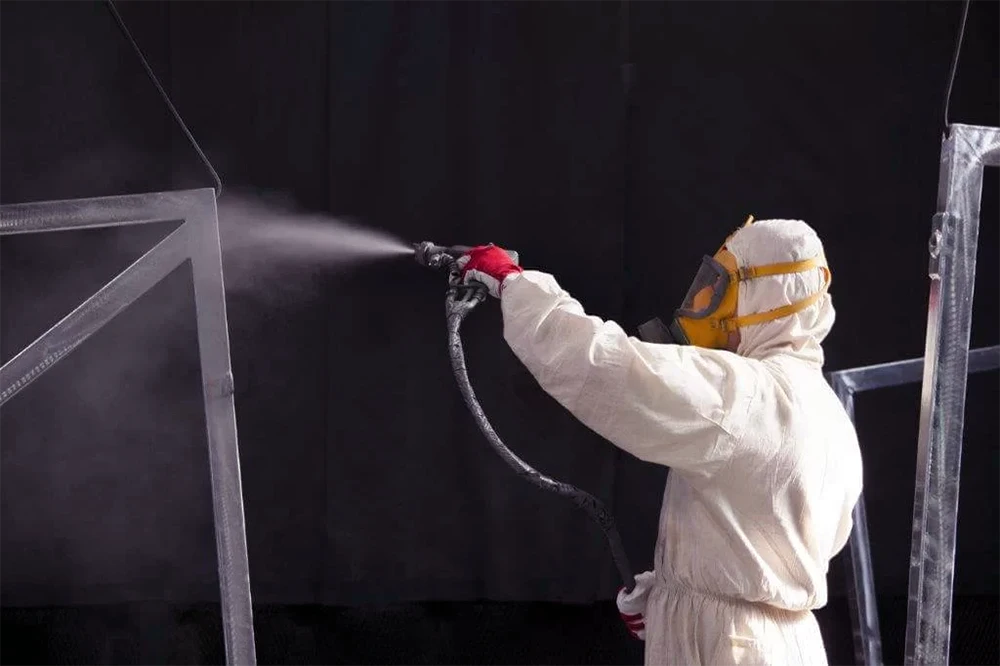
The airless spray system is an efficient paint spraying equipment. It uses high pressure to push the paint through a small nozzle, which breaks up fluid into small droplets without the use of compressed air to achieve atomization of the paint. This system is particularly suitable for covering large areas quickly and is a common choice in industry and large-scale projects. The airless spray system is like the Rolex on the field, occupying a place in the painting industry with its powerful efficiency and wide range of applications.
Working principle and key components:
The heart of an airless spray system is its high-pressure pump, usually a piston or diaphragm pump, which can increase paint pressure to over 3,000 PSI. The paint is sprayed out at high speed through a small and precise nozzle under strong pressure, and is rapidly atomized in the air to form fine paint particles to achieve a uniform coating. Other key components of the system include high-pressure hoses, spray guns and replaceable nozzles, all of which are important for ensuring spray quality and efficiency.
Application areas:
Airless spray systems are used in a wide range of applications, including interior and exterior coating of residential and commercial buildings, anti-corrosion coating of industrial equipment and structures, and maintenance of large facilities such as bridges and ships. Due to its efficient coating effect, it is also often used for coating rough surfaces such as masonry or concrete.
Advantages and limitations
Advantage:
- High efficiency: Airless spraying can quickly cover a large area, greatly saving time.
Uniform Coating: High-pressure atomization produces fine, uniform paint particles for a smooth finish. - Powerful Penetration: Able to handle high viscosity coatings and spray without dilution. Can handle high viscosity coatings and is suitable for a variety of coating types.
limit:
- Overspray: Potential waste of paint, especially if edge control is not managed properly.
- Equipment maintenance: Regular cleaning and maintenance are required to prevent clogging and wear.
- Difficulty of operation: For beginners, it may be difficult to master the technique of even spraying.
The key to airless spraying is to ensure that all surfaces are clean, dry, and properly masked. Check the tightness of all equipment connections to prevent leaks and select the appropriate nozzles for the current coating and application. Test spray the scrap and adjust the spray gun to the optimal pressure to ensure the best atomization of the paint. When painting, hold the spray gun perpendicular to the surface and maintain a consistent speed for an even coat. After spraying, clean the spray gun and nozzle with an appropriate solvent to prevent paint buildup and equipment damage.
The airless spray system is a powerful and effective painting tool. Although it may require more skill and attention in operation and maintenance, the high efficiency and high-quality coating results it brings make it an ideal choice for many professional painters. The first choice for installation projects. With proper operation and maintenance, airless spray systems can be a valuable assistant in your painting operations.
Air assisted Airless System.
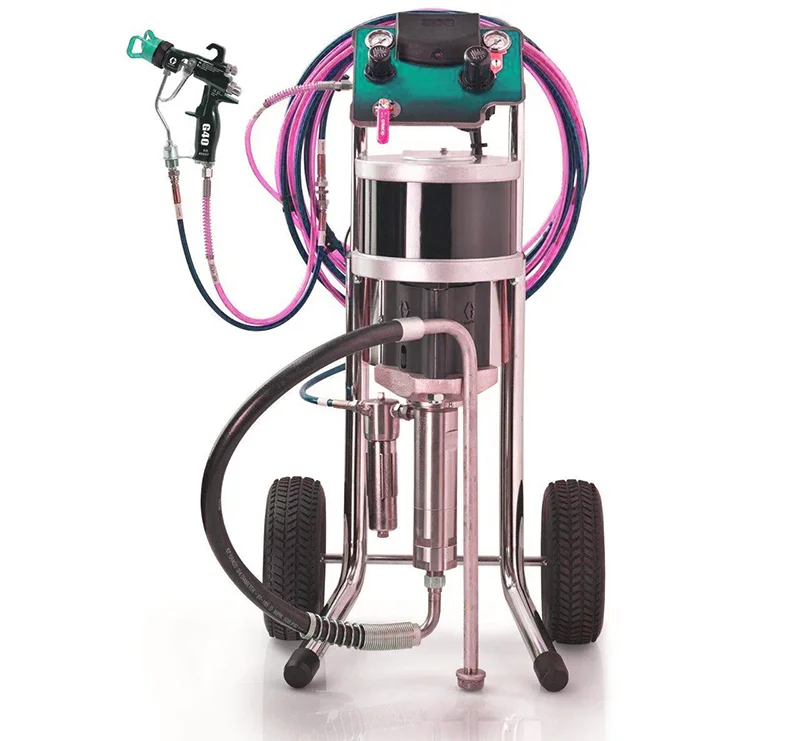
Air-assisted airless spray systems combine the best of both worlds, blending the high pressure of airless spraying with the fine atomization of air spray. This technology is particularly effective for achieving a fine finish while maintaining high efficiency, making it popular for a range of applications.
How It Works and Key Components:
In air-assisted airless systems, the paint is pressurized by a pump similar to airless systems, which uses a medium- to high-pressure fluid supply for atomization and compressed air at the cap for pattern control. This process produces finer spray patterns than traditional airless spraying. Key components include high-pressure pumps, air compressors, spray guns and various nozzles.
Application Fields:
This system is commonly used in industries requiring high-quality finishes, such as automotive painting, furniture manufacturing, and machinery coating. Its ability to provide a smooth, even coat makes it suitable for projects where aesthetics are important.
Advantages and Limitations:
Advantages:
- Fine finish: The combination of air and high pressure allows for a finer spray pattern, resulting in a smoother finish.
- Reduced overspray: The air assistance helps control the spray pattern, reducing wastage and overspray.
- Efficiency: Air-assisted airless systems can cover large areas quickly, similar to airless systems.
Limitations:
- Complexity: Operating an air-assisted airless system requires more skill and training compared to airless systems.
- Maintenance: Regular maintenance is necessary to ensure the air compressor and pump are functioning correctly.
Air-assisted airless spray systems offer a balance of efficiency and quality, making them a versatile choice for various coating applications. With proper operation and maintenance, they can provide high-quality finishes efficiently.
Thermal Spray Systems.
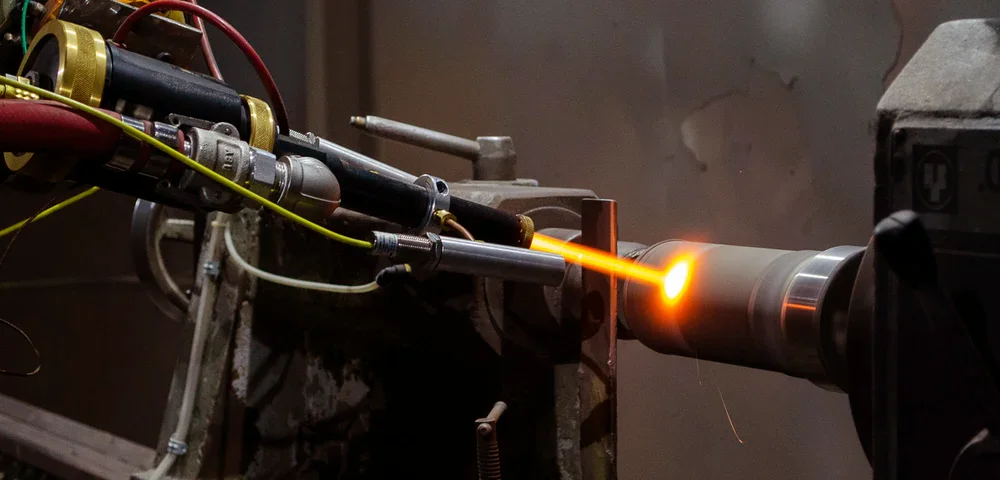
Thermal spray systems are advanced surface coating technologies that are coating processes in which melted (or heated) materials are sprayed onto a surface.These systems use heat to melt materials into a fine spray, which is then applied to the surface to create a protective or decorative coating. The process involves heating the coating material (usually in the form of a wire, powder, or rod) to a molten or semi-molten state and then accelerating it onto the substrate using a high-velocity gas stream, typically compressed air or inert gas.
Key Components:
Thermal spray systems consist of several key components, including a spray gun, a material feeder (such as a wire or powder feeder), a heat source (such as a plasma torch or flame), and a gas supply system. The spray gun is used to direct the heated material onto the substrate, while the material feeder controls the flow of the coating material. The heat source is responsible for melting the coating material, and the gas supply system provides the high-velocity gas stream used to accelerate the molten material onto the substrate.
Applications:
Thermal spray systems are used in a wide range of industries, including aerospace, automotive, electronics, and manufacturing. They are commonly used to apply wear-resistant coatings to machine parts, protect components from corrosion, and provide thermal insulation. Thermal spray coatings can also be used to restore worn or damaged parts, extending their service life and reducing maintenance costs.
Advantages and Limitations:
Advantages:
- Versatility: Thermal spray systems can apply a wide variety of coatings to different substrates.
- Thickness Control: Coating thickness can be easily controlled by adjusting the spray parameters.
- Bond Strength: Thermal spray coatings typically exhibit excellent bond strength with the substrate.
- Cost-Effective: Thermal spray coatings can be a cost-effective solution for extending the life of components.
Limitations:
- Surface Preparation: Proper surface preparation is critical for the adhesion of thermal spray coatings.
- Equipment Complexity: Thermal spray systems require skilled operators and regular maintenance.
- Environmental Impact: Some thermal spray processes may generate hazardous fumes or waste materials.
Thermal spray systems are an effective and versatile solution for a wide range of coating applications. By understanding their key components, applications, advantages, and limitations, users can make informed decisions about the use of thermal spray coatings in their projects.
Cold Spray System.
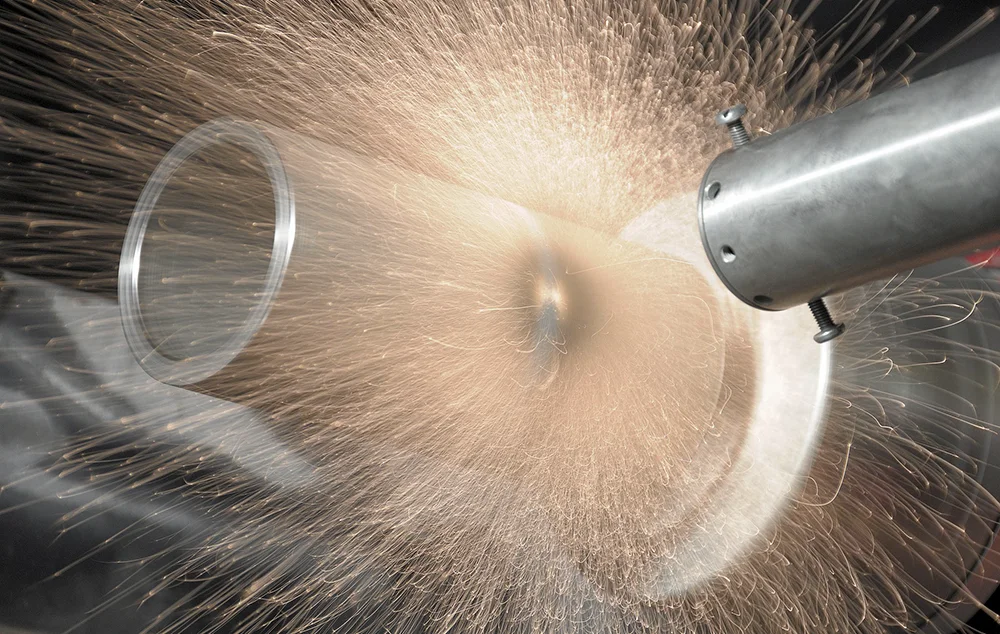
Cold spray is a solid-state coating process that uses a high-speed gas jet to accelerate powder particles toward a substrate. Unlike traditional thermal spray processes that rely on melting, cold spray deposits the particles in a solid state, which can result in dense, high-quality coatings with minimal heat-affected zones.
Introduction and Working Principle:
The cold spray system consists of a powder feeder, a supersonic nozzle, a gas heating system, and a control system. The process begins with the powder being fed into the nozzle, where it is accelerated to high velocities by a high-pressure gas stream. The gas stream heats the particles to a temperature below their melting point, but high enough to achieve plastic deformation upon impact with the substrate. The particles bond to the substrate due to the high impact energy and the mechanical interlocking between the particles and the substrate.
Key Components
- Powder Feeder: Supplies the powder material to the nozzle.
- Supersonic Nozzle: Accelerates the powder particles to high speeds.
- Gas Heating System: Heats the gas stream to the required temperature.
- Control System: Regulates the flow rate of powder and gas, as well as other process parameters.
Application Areas:
Cold spray technology is used in various industries, including aerospace, automotive, electronics, and defense. It is particularly useful for repairing damaged components, applying wear-resistant coatings, and manufacturing complex-shaped parts.
Advantages and Limitations
Advantages:
- Low Heat Input: Minimizes the risk of substrate distortion or metallurgical changes.
- High Deposition Efficiency: Provides a high material utilization rate.
- Wide Range of Materials: Can deposit a variety of metals, alloys, and composite materials.
Limitations:
- Limited Substrate Compatibility: Some materials may not bond well with certain substrates.
- Equipment Cost: Cold spray equipment can be expensive to purchase and maintain.
- Limited Layer Thickness: Cold spray is more suitable for thin coatings rather than thick deposits.
Cold spray technology offers a unique solution for coating applications where traditional thermal spray processes may not be suitable. Its ability to deposit coatings at low temperatures makes it ideal for sensitive substrates and complex geometries, making it a valuable tool in the coating industry.
Whether you’re a DIYer looking to repaint your bedroom, or a professional working on industrial tasks, there’s a spray system to suit your needs. By choosing the right spray hero, you’ll not only save time and materials, but you’ll also get consistent results that look like they were made by a master. Remember, no matter which system you choose, understanding the true power of its spray equipment will help you plan your project properly from the beginning!
What Equipment and Accessories Does the Coatings Spray System Have?
In the vibrant world of paint application, spraying equipment and accessories play starring roles in the performance and efficiency of your projects. Just like a well-oiled orchestra, each component from air assist sprayers to aerosol dispensers works in harmony to ensure your painting symphony is a masterpiece. Here’s your guide to understanding the various instruments in the coatings spray system ensemble and how they enhance the art of spray painting.
- Air Assist Sprayers
Air assist sprayers are the virtuosos of the paint spraying world. These systems combine the finesse of air spraying with the power of airless systems, providing a performance that boasts both high finish quality and efficient paint usage. They are particularly adept at delivering a smooth, uniform coating, making them ideal for projects that demand a flawless finish, like automotive exteriors or high-end furniture. The reduced overspray and paint waste make them a cost-effective and environmentally friendly option. - High Volume Low Pressure (HVLP) Systems
The HVLP sprayers are like the meticulous artists of the spray painting world, perfect for detailed and precision work. Using a high volume of air at low pressure, HVLP systems ensure minimal overspray and provide excellent control. They’re especially useful in applications requiring a top-tier finish with minimal environmental impact, such as custom cabinetry or automotive refinishing. Their efficiency in paint usage translates into reduced operational costs and lower environmental impact. - Powder Coating Spray Equipment
Imagine a durable, environmentally friendly paint application—that’s what powder coating equipment delivers. This technology uses a dry powder that is electrostatically charged and sprayed onto surfaces. It’s then cured under heat to form a skin-tight coating that is tougher than conventional paint. Known for its durability and high-quality finish, powder coating is ideal for appliances, auto parts, and outdoor furniture. It is the first choice for obtaining a durable, beautiful finish that can stand up to the elements. Click here to learn basic powder coating knowledge. - Aerosol Spray Dispensers
The quick-draw artists of the painting world, aerosol spray dispensers offer convenience and portability for touch-ups and small-scale projects. These are self-contained spray systems that typically use a propellant and paint mixture in a can. They’re perfect for quick jobs, hard-to-reach places, or on-the-go applications. Their easy handling makes them an excellent choice for small projects and emergency touch-ups. - Sprayers
Sprayers, ranging from simple, manual pump-action devices for home use to sophisticated, motor-driven machines for industrial applications, are the backbone of any painting project. They are designed to handle a variety of paint types and viscosities, offering versatility across different projects and substrates. - Spray Guns
Spray guns are all about precision and can vary from airless models to HVLP and electrostatic guns, each designed to provide optimal performance for specific types of coatings and finishes. Their precise control over the paint application not only improves the finish quality but also reduces paint wastage, enhancing both cost efficiency and environmental sustainability.
Understanding the roles and benefits of different spraying equipment and accessories can greatly influence the performance and outcome of your coating projects. By selecting the right tools for your specific needs, you ensure not only the beauty of your finished project but also the efficiency and ease of your painting process. So, whether you’re refurbishing an old chair or coating an entire fleet of vehicles, the right spray technology can make all the difference in bringing your vision to life with precision and flair.

Other basic accessories and parts for spray painting.
Continuing our exploration of the essential ensemble of spray painting equipment, let’s delve into the critical accessories that enhance performance, ensure safety, and support the seamless execution of spray painting tasks. Each of these components plays a unique role in the symphony of spray painting, contributing to both the precision of the application and the longevity of the equipment.
- Filters
Filters in a spray system act like the guardians of quality, ensuring that only clean, debris-free paint reaches your surface. They prevent clogging and potential defects in the finish, which can be crucial for high-stakes projects like automotive painting or fine furniture finishing. Regular replacement or cleaning of filters is vital to maintain the integrity of your paint job. - Hoses
Hoses are the arteries of spray systems, delivering the vital flow of paint from source to surface. Available in various lengths and diameters, hoses must be chosen based on the type of paint and the required pressure settings of your project. Proper maintenance and handling ensure they deliver consistent performance without leaks or bursts. - Airless Spray Tips & Atomizing Spray Nozzles
These components are the precision tips of the painter’s tool, defining the pattern and thickness of the spray. Airless spray tips are used for their ability to handle high-pressure paint flow and are suitable for large areas, while atomizing nozzles are perfect for fine finish applications. Choosing the right tip or nozzle affects paint consumption, finish quality, and overall efficiency. - Lubrication Equipment
Just like any high-performing machine, spray systems need regular lubrication to operate smoothly. Lubrication equipment helps maintain the moving parts of your sprayers, extending their life and ensuring consistent performance. Proper lubrication reduces the wear and tear caused by repeated use, safeguarding your investment. - Pressure Pots
Pressure pots are used for their capacity to hold and pressurize larger volumes of paint, which is ideal for bigger jobs or when a continuous flow is needed. They enable a steady paint supply to the sprayer, reducing the need for frequent refills and thus boosting productivity. - Pumps
The heart of many spray systems, pumps propel paint through the system with controlled pressure. The type of pump—from diaphragm to piston—depends on the paint’s viscosity and the required pressure. Effective maintenance of pumps ensures uninterrupted operation and long-term reliability. - Agitator
An agitator keeps the paint mixture uniform and prevents settling of solids, which is crucial for consistency in color and texture across large jobs. It’s particularly important when using paints that can separate or harden over time. - Regulators
Regulators control the air and paint pressure, allowing for precise adjustments that can affect the finish quality. Proper regulation helps in reducing overspray and minimizing paint waste, making your operation more cost-effective and environmentally friendly. - Respiratory Protection
Safety first: Respiratory protection gear is essential to shield users from harmful vapors and aerosols. This includes masks and respirators that are specifically designed to filter out paint particles and fumes, ensuring the health and safety of the operator. - Paint Booths
Paint booths provide a controlled environment for spray painting, optimizing safety and cleanliness. They are designed to exhaust fumes and overspray, protect the finished product from dust and debris, and comply with environmental regulations. - Other Spray Painted Parts
Various other components, such as spray shields, drying racks, and cleaning stations, support the spray painting process. Each plays a part in enhancing the workflow, maintaining the quality of the finish, and ensuring the workspace remains clean and organized.
Understanding and optimizing the use of these spray accessories and components is crucial for any professional aiming to achieve top-quality results with maximum efficiency. By integrating the right tools and maintaining them properly, you can enhance the performance of your spray system and deliver exceptional painted products consistently. Remember, in the world of spray painting, every part has a role to play in creating the perfect finish.
What are the Latest Innovations in Spray Painting Equipment and Technology?
The world of spray painting is constantly evolving, with innovations in equipment and technology driving efficiency, quality, and sustainability. Here are some of the latest advancements:
- High-Efficiency Spray Guns: New spray gun designs aim to improve transfer efficiency, reducing overspray and paint waste. These guns are engineered to deliver a more precise and consistent spray pattern, ensuring better coverage with less material.
- Smart Spray Technology: Smart spray systems use sensors and data analytics to optimize spray patterns and paint flow. These systems can adjust settings in real-time to account for changes in paint viscosity, ambient conditions, and surface characteristics, leading to improved finish quality and reduced rework.
- Robotic Spray Systems: Robotic spray systems are becoming increasingly sophisticated, with improved programming and control capabilities. These systems can handle complex spray patterns and can be integrated into automated production lines for increased efficiency and consistency.
- UV-Cured Coatings: UV-cured coatings are gaining popularity due to their fast curing times and environmental benefits. UV-curing equipment is becoming more efficient and cost-effective, making it a viable option for a wide range of applications.
- Green Coatings: Environmentally friendly coatings are becoming more prevalent, with manufacturers developing new formulations that contain fewer volatile organic compounds (VOCs) and other harmful chemicals. These coatings offer improved safety for workers and reduced environmental impact.
Overall, the latest innovations in spray painting equipment and technology are focused on improving efficiency, quality, and sustainability. By embracing these advancements, manufacturers can achieve better results while reducing costs and environmental impact.
All in all, the world of paint spray equipment is vast and diverse, offering a wide range of options to suit a variety of applications. As we conclude our exploration of coating spray equipment, we hope you gained valuable insights into the types of systems, equipment, and accessories available. By understanding the different types of spray systems, equipment, and accessories, you can improve the efficiency, quality, and safety of your painting projects. Don’t forget to utilize our “coatingsdirectory.com” to connect with trusted coating service providers and factories for your future projects, ensuring your project is in capable hands.
What is the difference between an airless sprayer and a HVLP (high flow) sprayer?
Airless sprayers and high-volume low-pressure (HVLP) sprayers are effective for different spraying needs, but they operate in very different ways.
A HVLP system (which stands for high volume, low pressure) uses air pumped from a compressor or turbine to atomise paint before it leaves the nozzle. This produces a finer spray, which makes it ideal for detail and finish work. HVLP systems generally use paint more efficiently, reduce overspray and achieve a higher quality finish, making them the first choice for tasks that require precision, such as cabinetry or furniture.
On the other hand, an airless sprayer uses a piston or pumping action to pressurize the paint before spraying it through a nozzle outlet which is smaller than those found on a HVLP system. The result is a mist that spreads quickly and evenly over the surface. It’s ideal for larger projects like walls and siding because it can handle thicker paint and cover larger areas quickly.
What is the difference between electrostatic spraying and powder coating?
Electrostatic spraying and powder coating are both advanced surface treatment technologies, but can meet different application needs.
Powder coating involves the application of a dry powder (usually a thermoplastic or thermoset polymer), often using an electrostatic spraying process. It is then cured under heat to form a surface layer. Usually needs to be completed in a specific production workshop.
However, electrostatic spraying is used with liquid coatings, high solids or powder coatings. The paint particles become charged as they pass through the spray gun, causing them to be electrostatically attracted to the surface. This spraying method does not require heat curing, so it can generally be done in the workshop or on site.
What is atomization in coating?
Atomization is the object transformation behavior that occurs when a liquid jet breaks up into more or less fine droplets, surrounded or squeezed by surrounding gas. In coating terms, it refers to the technology used in spray applications where air pressure, centrifugal force, or a high-pressure pump is used to disperse paint or other coating substances into a mist. The process creates a smooth, uniform coating on the surface and is critical to achieving even distribution of coating material over complex geometries. Proper misting ensures an even surface finish that is free of runs and sags, which is critical to achieving a professional-grade surface finish.
What are the 4 types of spray guns?
There are four main types of spray guns used in coating applications: air (pneumatic) spray guns, airless spray guns, air-assisted airless spray guns, and electrostatic spray guns.
Air (pneumatic) spray guns: Use low or high air pressure to atomize paint, great for fine work but will produce more overspray.
Airless Spray Guns: These spray guns operate by using a pressure pump to force paint through a small nozzle without the use of air and are suitable for high viscosity paint and large areas.
Air-assisted airless spray guns: Air-assisted airless spray guns combine the high pressure of airless spraying with the fine atomization of air spraying. This spray gun can achieve fine spray patterns while maintaining high efficiency.
Electrostatic spray guns: They charge paint particles as they are sprayed, enhancing paint adhesion and reducing waste, making them ideal for industrial and automotive applications.
What are the 8 major parts of a typical paint spray gun?
- Atomization Components: Including air cap, nozzle, and fluid needle (including needle seat and needle sleeve). Directing airflow directly affects the atomization and performance of the spray gun.
- Air Valve Components:Spray Width Adjustment Components: Spray Width Adjustment Components Also known as Nozzle/Tip, Controls the paint flow and spray pattern.
- Fluid packing nut set Components: This refers to the sealing components preventing paint needle leaks. It includes details like needle seal tightening gasket, needle seal tightening screw, spring, etc.
- Air Adjustment Components: They comprise airflow adjustment screw (knob), airflow adjustment seat, needle, spring, and sealing elements. Adjust the air inlet pressure for spraying.
- Fluid Adjustment Components: Allows the operator to control the flow of paint. Including paint flow adjustment screw (knob), paint flow adjustment seat, spring, etc.
- Paint Cup: Holds the paint or coating material.
- Feed Tube: Connects the paint cup to the nozzle.
- Handle: Designed for ease of holding and operating the gun.

